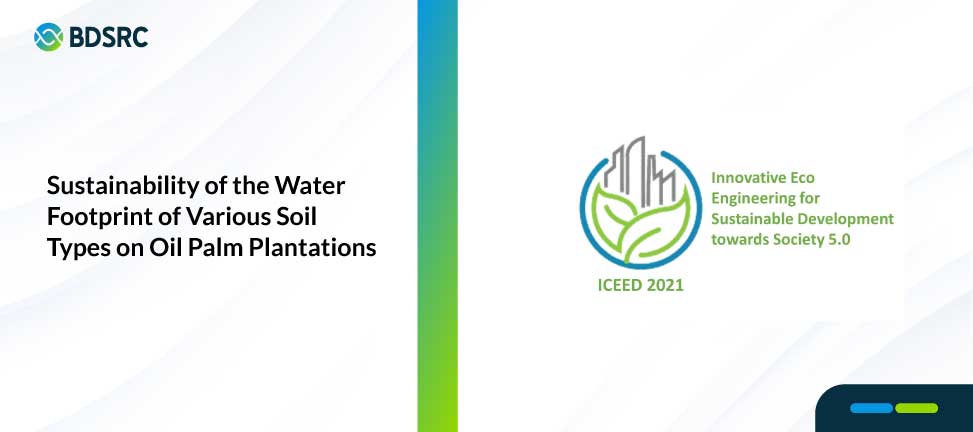Sustainability of the Water Footprint of Various Soil Types on Oil Palm Plantations

There are significant studies that have quantified oil palm water footprint as an indicator of environmental sustainability but an estimation of water footprint under varying soil types furthermore is still limited. The objectives of the study were to estimate whether annual variations of soil type and yields significantly effects for the oil palm water footprint. The data from three types of soil (spodosol, inceptisol, ultisol) were collected from an oil palm plantation in Pundu village, Central Kalimantan, Indonesia. To perform the water footprint analysis we utilize water balance accounting equations via application Cropwat 8.0. From that, we determine the crop irrigation scheduling to compute the blue, green, and grey water footprint of oil palm fresh fruit bunch in the area. Our analysis found that the actual evapotranspiration of spodosol and inceptisol have the same value: 1242 mm/year whilst ultisol is 1239 mm/year. The total water footprint of oil palm varied considerably with the largest value being 1310.04 m 3 /ton for ultisol. The actual evapotranspiration of spodosol and inceptisol have the same value of 1242 mm/year whilst ultisol is 1239 mm/year. The higher production resulted in a lower water footprint and vice versa. Moreover, the total water footprint from ultisol soil type has the highest value due to the lowest yields. The difference in evapotranspiration value resulted in the insignificant value of total water footprint. The lower water availability, the lower water use, and the higher actual irrigation requirement in oil palm plantation yet showed the unnotable impact on water footprint in different soil types for the oil palm plantation.
The International Conference on Eco Engineering Development 2021
Lisma Safitri, Hermantoro Sastrohartono, Valensi Kautsar, Teddy Suparyanto, Alam Ahmad Hidayat, Bens Pardamean
